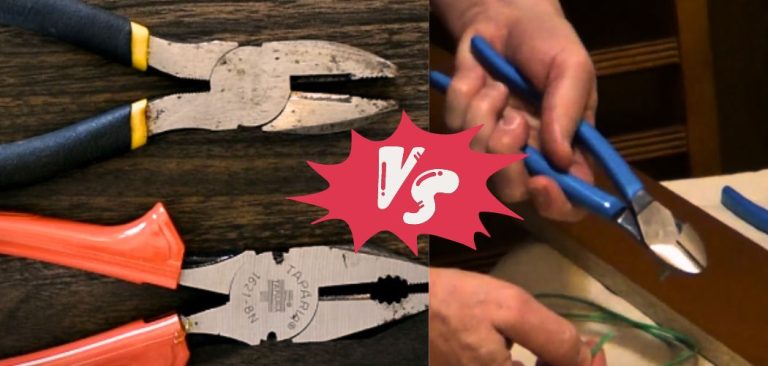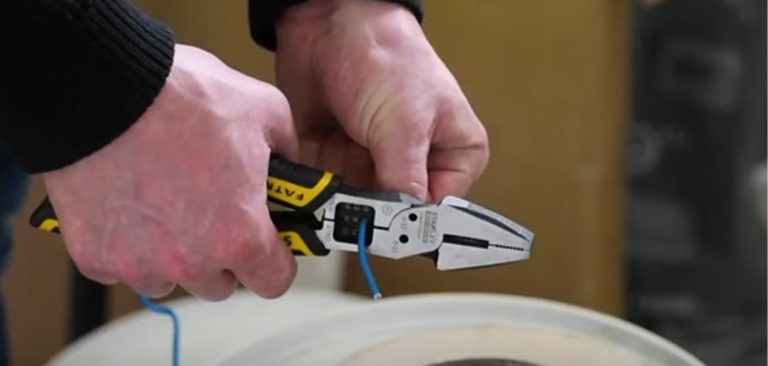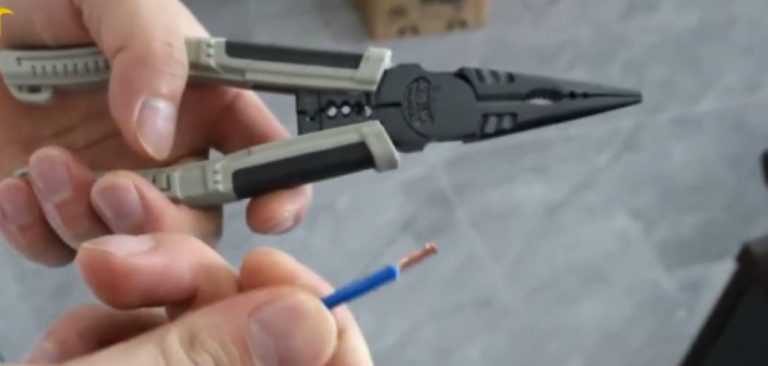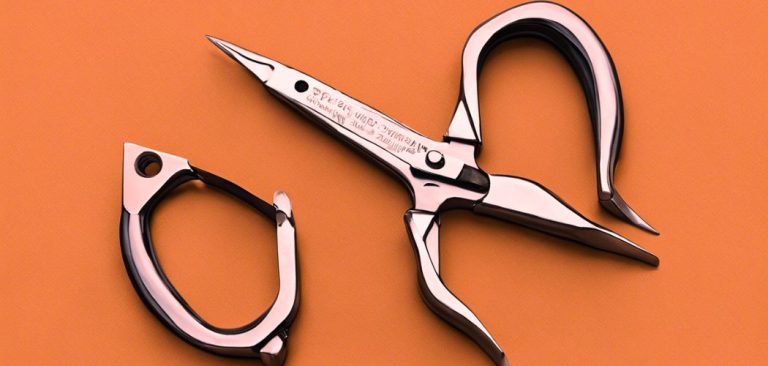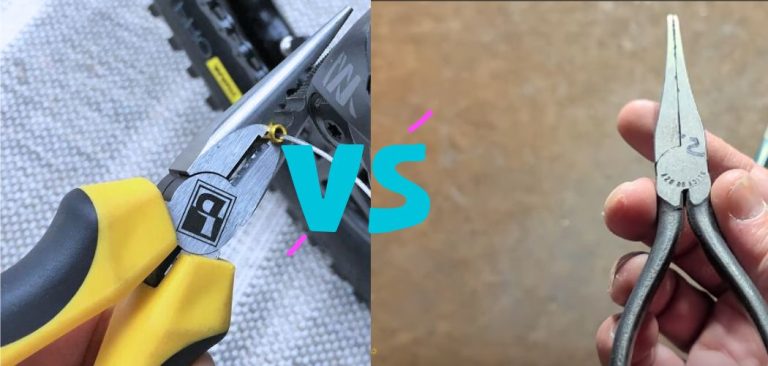Combination Pliers vs Lineman Pliers: What’s the Real Difference?
If you’ve ever found yourself wondering whether combination pliers and lineman pliers are the same tool, you’re not alone. It’s common for people to confuse these two terms and use them interchangeably .While both tools are essential in any toolbox, they are designed for different tasks. Understanding the distinct features of each can significantly improve your work efficiency.
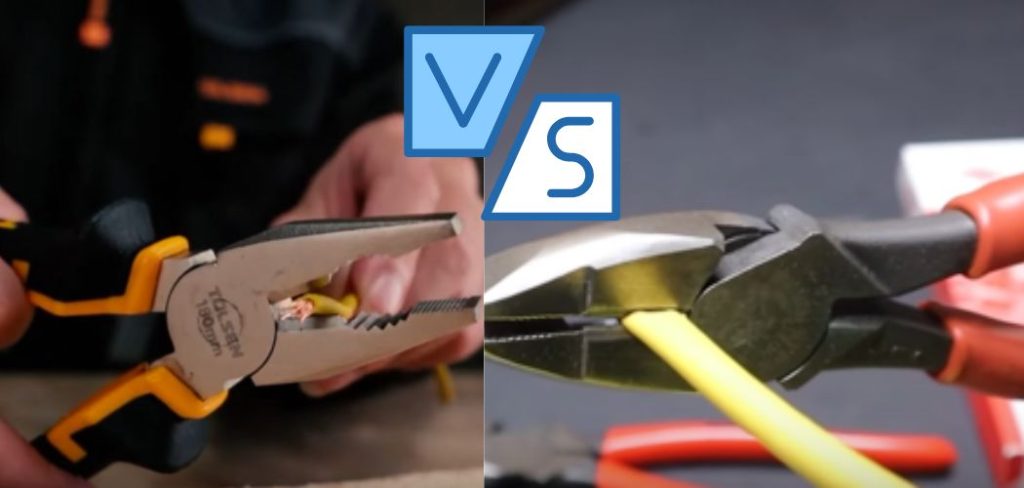
In this article, we’ll explore the key differences between combination pliers and lineman pliers, their ideal uses, and why selecting the right one can make all the difference in your projects.
What Are Combination Pliers?
Combination pliers are versatile hand tools designed for gripping, bending, cutting, and holding various materials. Their jaw design includes a flat gripping surface for firm holds and a curved, serrated section for securing round objects like pipes.
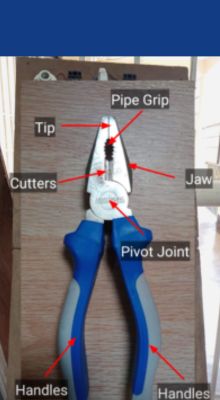
Typically, combination pliers are 6 to 8 inches in length, providing optimal leverage for medium-duty tasks. Their cutting edges are hardened to handle wires up to 12 AWG, making them indispensable for DIY enthusiasts, plumbers, and mechanics. Crafted from high-carbon steel for durability, many combination pliers come with insulated handles, rated up to 1,000V, ensuring safety for basic electrical tasks.
What Are Linesman Pliers?
Lineman pliers, also known as side-cutting pliers, are heavy-duty tools primarily used by electricians and tradespeople. Typically measuring 8 to 10 inches, these pliers offer superior leverage for cutting, bending, and twisting wires. Their flat jaws provide a firm grip, and their hardened cutting edges are designed to handle thicker wires, nails, and other tough materials.
Many lineman pliers also include integrated crimping tools and fish tape pullers, making them essential for electrical work. Made from forged, high-carbon steel, lineman pliers are built for durability. Insulated versions can handle up to 1,000 volts, ensuring safety when working on live electrical circuits.
What is the Actual Difference Between Combination vs Linesman Pliers
combination vs Linesman Pliers I have used them myself. The differences I have highlighted will help you discover new aspects about them. Let’s find out the unknown facts about them.
| Feature | Combination Pliers | Lineman Pliers |
| Primary Use | General-purpose tool for gripping, cutting, and holding various objects. | Specialized for electrical and heavy-duty applications like cutting, twisting, and pulling wires. |
| Jaw Design | Flat gripping surface with a curved, serrated section for gripping round objects like nuts or small pipes. | Flat, knurled jaws for gripping wires and materials; some include reaming capabilities for conduit edges. |
| Cutting Ability | Suitable for cutting light to medium-gauge wires (e.g., 12–14 AWG). | Hardened cutting edges handle tough materials like 10-gauge wires, nails, and screws. |
| Size and Length | Typically 6–8 inches, compact and lightweight for precision and general tasks. | Larger, 8–10 inches, offering more leverage for high-torque, heavy-duty tasks. |
| Special Features | Versatile curved jaw for gripping round objects; lightweight design for multipurpose use. | Often includes crimping tools, fish tape pullers, and reaming features for professional electrical work. |
| Ideal Users | DIYers, homeowners, mechanics, and light plumbing or repair work. | DIYers, homeowners, mechanics, and light plumbing or repair work. |
| Durability | Durable enough for medium-duty tasks; made of high-carbon steel. | Heavy-duty build with robust steel for extreme force; often rated for cutting hardened materials. |
| Insulated Versions | Available for up to 1,000 volts but less commonly used for electrical work. | Frequently insulated for electrical work, with certifications up to 1,000 volts. |
| Popularity | More popular in Europe for general versatility. | Widely used in the U.S. and Canada for electrical and heavy-duty applications. |
| Best For | Pulling cables, gripping small pipes, cutting light wires, and general DIY tasks. | Twisting conductors, pulling fish tape, reaming conduits, and cutting thick wires or nails. |
My Personal Opinion for Using Combination Pliers and Linesman Pliers
In my experience, combination pliers are the go-to multi-taskers for general use. They shine in lighter tasks like assembling furniture or repairing household items, where their ability to grip bolts and cut smaller wires comes in handy. A tip I’d share is to use their curved jaw to grip round objects, like small pipes—it’s a game-changer for DIY plumbing.
On the other hand, lineman pliers are the preferred tool for heavy-duty work. They’re perfect for twisting multiple wires, cutting through tough materials like nails, or handling thick cables. Their added length and cutting power make a noticeable difference. A pro tip: use the flat jaws to ream conduit edges for a cleaner finish. Always choose the right tool for the job—it makes all the difference in the time and effort required!
Pros and Cons of Using Combination Pliers
Pros of Using Combination Pliers
- Versatile Functionality: Great for gripping, cutting, and holding various materials, making them perfect for general tasks.
- Compact and Lightweight: Ideal for precision work in confined spaces without causing fatigue during extended use.
- Affordable: A cost-effective solution for DIYers and homeowners.
- Electrical Safety: Insulated versions are available for light electrical work, with up to 1,000-volt protection.
- Easy to Use: Ergonomically designed, even beginners can handle them comfortably.
Cons of Using Combination Pliers
- Limited Cutting Capacity: Struggles with cutting thicker wires or tougher materials like nails.
- Less Gripping Power: Not ideal for heavy-duty gripping tasks, as their jaws may not provide sufficient strength for larger or heavier objects.
- Not Suitable for Professional Work: Lack of leverage limits their use in high-force or heavy-duty applications.
- Less Precision: Can’t match the precision of specialized tools like reaming or twisting pliers.
- Regional Preference: More common in Europe than the U.S., where lineman pliers dominate.
Pros and Cons of Using Linesman Pliers
Pros:
- Superior Cutting Power: Cuts through tough materials like 10-gauge wire and nails with ease.
- High Leverage: Larger size offers increased leverage, ideal for twisting wires or pulling fish tape through conduits.
- Durability: Built to withstand heavy-duty tasks, designed for extreme force without compromising performance.
- Specialized Features: Includes crimping tools, fish tape pullers, and reaming capabilities for electrical work.
- Electrical Safety: Insulated versions rated for up to 1,000 volts ensure safety during electrical tasks.
- Precision for Electrical Work: Flat jaws are perfect for tasks like reaming conduits or creating precise bends in wires.
Cons:
- Bulkier Size: Their larger size and weight make them harder to maneuver in tight spaces or for delicate tasks.
- Specialized Tool: May be overkill for simpler tasks where combination pliers would suffice.
- Higher Cost: The robust build and additional features make them pricier than combination pliers.
- Less Versatile for Non-Professional Use: Not the best tool for general household tasks like assembling furniture.
- Limited Grip for Round Objects: Less suited for gripping smaller, round objects compared to combination pliers.
FAQS
Can I Use Lineman Pliers for Tasks Outside of Electrical Work?
Yes, lineman pliers can handle a variety of heavy-duty tasks beyond electrical work. They are effective for cutting thick wires, pulling nails, twisting wire strands, or straightening metal rods. However, they are less suited for delicate tasks like gripping small round objects, where combination pliers would be more appropriate.
Why Are Lineman Pliers Considered Essential for Electricians?
Lineman pliers are essential for electricians due to their robust cutting capacity, leverage, and specialized features. Their flat jaws are ideal for twisting wires, reaming conduits, and bending sheet metal. The hardened cutting edges can easily handle thick wires and steel screws, making them indispensable for electrical and construction work.
Can Combination Pliers Be Used for Electrical Work?
While combination pliers can perform basic electrical tasks, they are not ideal for professional electrical work. Some models are insulated and rated for up to 1,000 volts, making them suitable for cutting and stripping light wires. However, lineman pliers are typically the better choice for tasks requiring more leverage, durability, and additional features like crimping and reaming.
Conclusion
As a tool user, I’ve found that each type of pliers has its strengths and ideal uses. Whether you’re tackling general DIY tasks or heavy-duty electrical projects, knowing the right tool to choose can significantly impact your results. If you have a different experience or opinion, feel free to share in the comments!
Read also:

